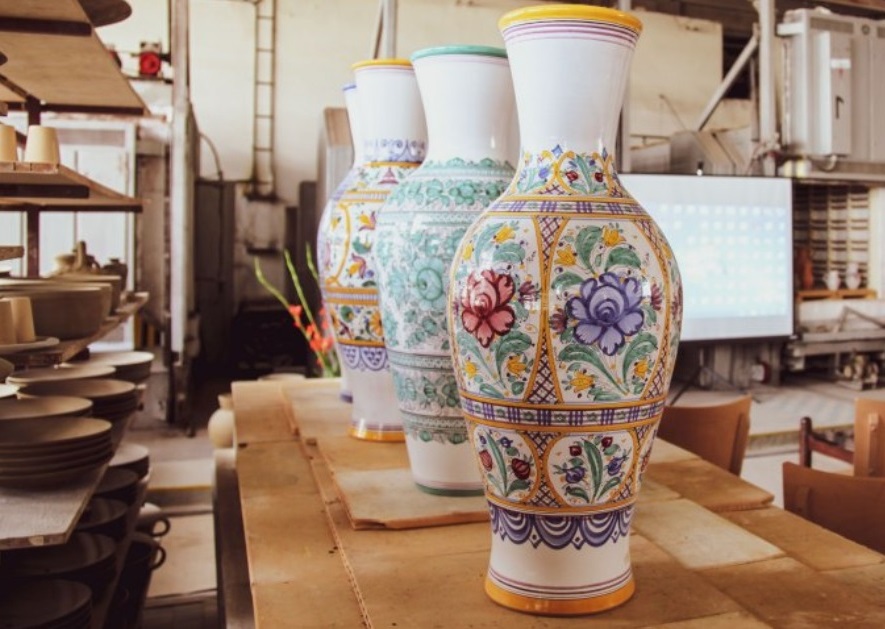The history and evolution of ceramics.
Throughout history, ceramics have played important roles in human life. This versatile material has been used to create a wide range of practical objects and also serves as a form of artistic expression. While the term “ceramic” is derived from the Greek word “keramos,” its origins can be traced back to ancient times. It is believed that early humans discovered that compacted soil, when exposed to fire, would harden. This discovery led to extensive experimentation with clay modeling and the development of advanced techniques to enhance the quality of ceramic products. Interestingly, the discovery of ceramics occurred independently in Mesopotamia, Near East, and China. Despite the geographical and cultural differences, the end products from these regions shared a focus on functionality.
The earliest ceramic artifacts date back to the Neolithic period, consisting mainly of tools for cooking. With the rise of Egyptian and Chinese civilizations, ceramics began to be crafted into decorative objects.
The process of hand modeling clay evolved into the production of slabs and tiles, facilitated by the introduction of the pottery wheel, an early tool that allowed for more precise shaping. As a result, intricate ceramic artifacts proliferated in the Eastern world, with the use of calcite cylinders enabling the application of repeated decorative motifs onto the surfaces.
Another significant advancement was the development of glazing, which involved decorating clay surfaces with “vitreous paints.” The earliest known application of glazes dates back to the third and second millennium BC, primarily in Egypt and other Eastern regions. Glazing transformed ceramic slabs into ornamental elements that adorned the walls of homes, celebrated for their luminosity and vibrant colors.
The spread of Islamic influence facilitated the introduction of ceramic wall tiles to Europe, as they traversed North Africa and reached Spain during the Moorish rule. Majolica tiles subsequently gained popularity in Southern Italy before spreading throughout the peninsula, enjoying a resurgence during the Renaissance. Tuscany and Emilia Romagna emerged as centers of majolica production.
Since the 15th century, ceramics have been the main material used to decorate the floors and walls of churches, palaces, and public buildings. Many of these structures still showcase glazed decorations that reflect a blend of Arab and Renaissance styles.
Italy has played a pivotal role in the history of ceramics. Renowned Italian masters such as Donatello and Della Robbia not only learned techniques from distant lands but also enhanced and perfected them, attaining unparalleled levels of excellence. This legacy has secured Italy’s ceramics as highly esteemed and sought-after products worldwide.
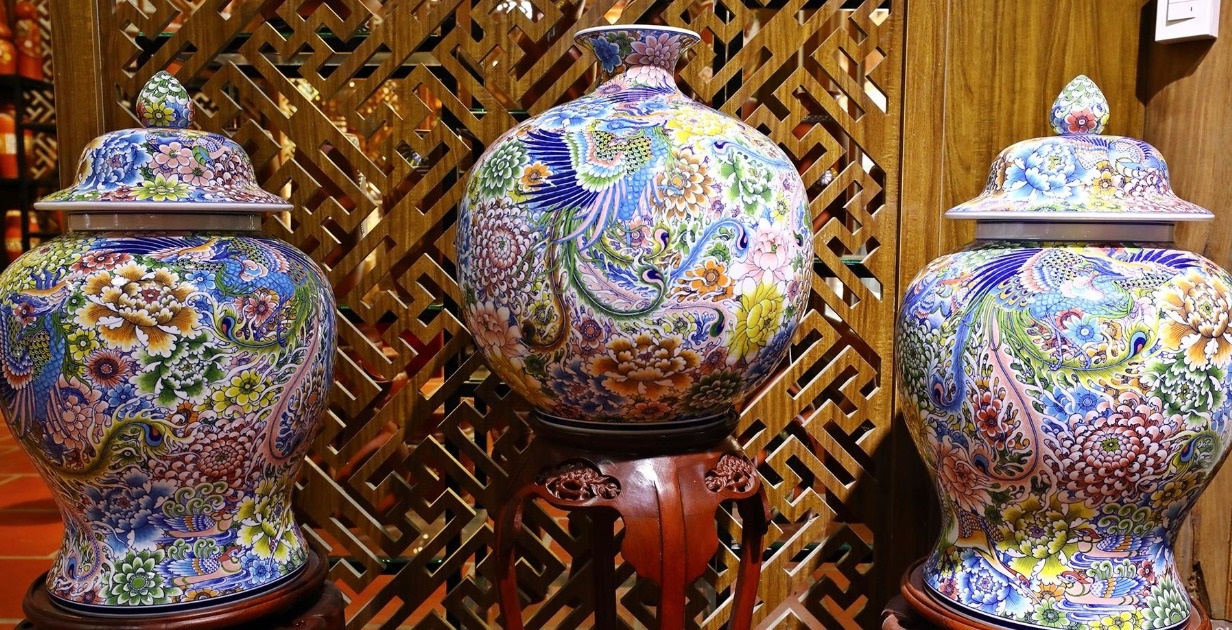
Ceramics defined.
The term “ceramic,” stemming from the Greek word “kéramos,” translates to “art of working clay” and carries a dual connotation. It denotes an inorganic, non-metallic material that is highly malleable in its natural state and becomes rigid after the firing process. Additionally, it refers to the end product obtained through the consolidation of the material via various firing processes.
Distinct types of ceramic products are created based on factors such as quality, processing, and glazing:
– Terracotta: porous clay with a natural red hue, uncoated
– Faenza: porous clay with transparent or opaque glass coating
– Stoneware (Gres): compact, vitreous clay
– Porcelain: compact, white vitreous clay
– Earthenware: white, porous clay coated with glaze
– Majolica: colored, porous clay with opaque glass coating
– Refractory ceramics: white or colored porous materials capable of withstanding high temperatures without significant changes
– Advanced ceramic products: highly pure, with specific compositions and exceptional resistance to heat, chemical wear, and electrical properties, utilized across various industries including the medical field.
For a comprehensive overview of ceramics and related terminology, refer to Sicer’s ceramics glossary.
Ceramics are constructed from a variety of materials and typically consist of a blend of clay, water, powders, and natural elements. The composition of ceramic products and their desired properties determine the specific materials and proportions used. For example, some ceramics are made solely from clay, while others may incorporate feldspar, silica, or other additives to enhance their characteristics.
The construction of ceramic items generally involves combining the materials and shaping them as desired, followed by firing them in a kiln or specialized equipment. Advanced ceramics designed for specific purposes may utilize more exotic substances such as tungsten carbide or zirconia.
The properties of ceramics, like those of any material, are influenced by the types of atoms involved, the bonds between them, and their arrangement. This atomic structure dictates the characteristics of the material. Ceramic materials are known for being:
– Harder and more brittle than metals
– Wear-resistant
– Refractory
– Good thermal and electrical insulators
– Nonmagnetic
– Oxidation-resistant
– Chemically stable
Now, let’s delve deeper into the mechanical and chemical properties of ceramics:
Mechanical Properties of Ceramics:
– Low impact strength
– High compressive strength
– Highly rigid structure with minimal or no yielding
– Possible brittle fracture due to microcracks causing local stress concentrations
– High hardness and strength in compression, along with a high softening temperature
– Poor thermal shock resistance
The brittle nature of ceramics means that selecting the appropriate material is crucial. The choice often involves determining the best manufacturing process and material grade for the specific application, such as 3D Printing or CNC Machining. If machining is required, availability of the material in the required size is a factor to consider. When dealing with materials like carbide or advanced ceramics, keep in mind that they are typically more difficult to machine, and EDM is commonly used. Therefore, designing the part to be Wire EDM friendly is important.
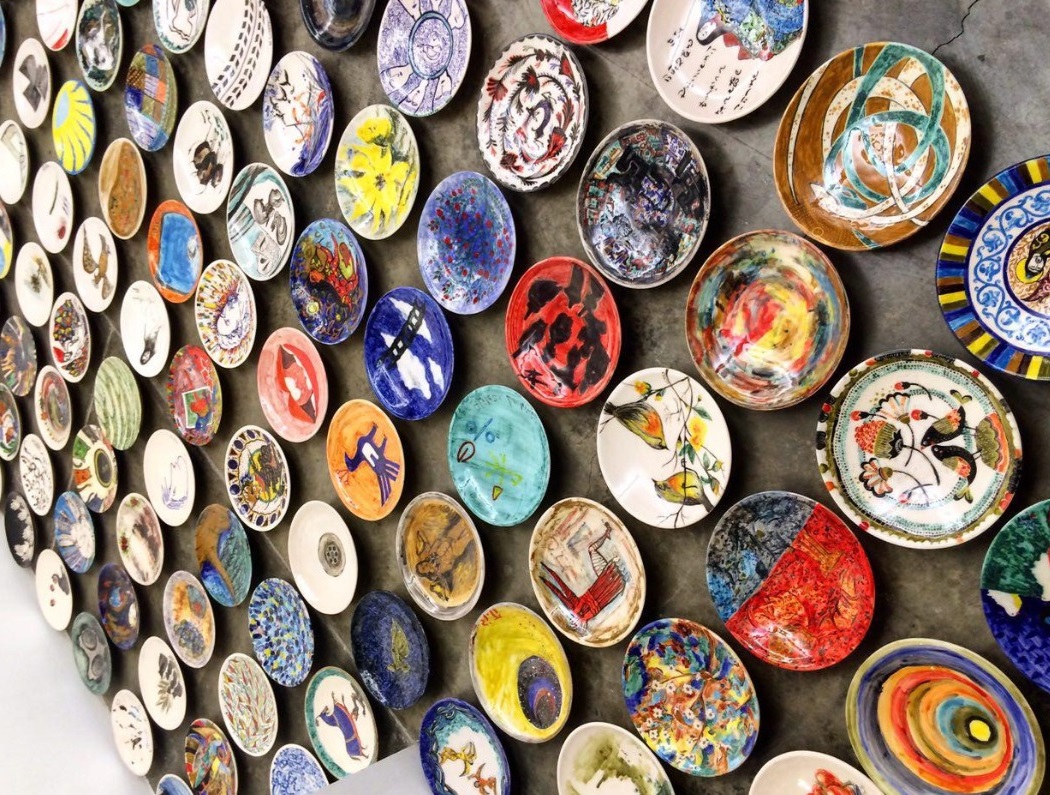
Chemical Properties of Ceramics:
Compared to most engineering materials, ceramics are highly chemically stable and inherently resistant to chemical reactions and corrosion. They are generally inert and do not react with acids or bases. However, the chemical properties of ceramics can vary based on their type and composition. For example, some ceramics may be susceptible to corrosion or degradation under specific conditions, while others can withstand chemical attacks. Additionally, some ceramics possess unique chemical properties, such as the ability to conduct electricity or act as catalysts. The chemical geste of pottery can be epitomized as follows:
– Mostly resilient to chemical attacks from gases, liquids, and high-temperature melts
– Generally dead andnon-reactive with acids or bases
Historical Overview of Ceramics:
The Oldest Known Ceramics:
The oldest ceramics discovered date back to at least 25,000 BC and were unearthed in Czechoslovakia. These ceramics were in the form of animal and human figurines, made from a mixture of animal fat, bone, bone ash, and clay. They were fired at low temperatures around 1000 degrees Fahrenheit in ground kilns or simply dried in the sun to harden.
First Functional Ceramic Vessels:
The initial instances of functional ceramic vessels are thought to originate from around 9,000 BC and were likely used for storing food, grains, and water. This coincides with the rise of small farming communities in Asia, the Middle East, and Europe.
Decorative Glazes and Surface Design:
Early ceramics were typically plain in design and texture, without the use of glazes. In the 6th and 5th centuries BC, Greek Attic vases demonstrated the first documented application of oxidizing and reducing atmosphere during firing to achieve surface patterns and varying colors.
The Invention of the Wheel:
One of the earliest advancements in ceramic fabrication was the invention of the wheel in 3,500 BC. This innovation allowed potters to surpass the limitations of hand building and explore the creation of pieces with radial symmetry.
Ceramics are made from various materials and typically contain a mix of clay, water, powders, and natural elements. The specific materials and proportions used in ceramic products are determined by their composition and desired properties. For instance, some ceramics consist only of clay, while others may include feldspar, silica, or other additives to improve their characteristics.
The creation of ceramic items generally involves combining the materials and shaping them as desired, followed by firing them in a kiln or specialized equipment. Advanced ceramics designed for specific purposes may use more unusual substances such as tungsten carbide or zirconia.
The properties of ceramics, like those of any material, are influenced by the types of atoms involved, the bonds between them, and their arrangement. This atomic structure dictates the characteristics of the material. Ceramic materials are known for being:
– Tougher and more brittle than metals
– Resistant to wear
– Able to withstand high temperatures
– Good thermal and electrical insulators
– Nonmagnetic
– Resistant to oxidation
– Chemically stable
Now, let’s explore the mechanical and chemical properties of ceramics in depth:
Mechanical Properties of Ceramics:
– Low impact strength
– High compressive strength
– Highly rigid structure with minimal or no yielding
– Potential brittle fracture due to microcracks causing local stress concentrations
– High hardness and strength in compression, along with a high softening temperature
– Poor thermal shock resistance
The brittle nature of ceramics means that choosing the right material is crucial. The selection often involves determining the best manufacturing process and material grade for the specific application, such as 3D Printing or CNC Machining. If machining is required, the availability of the material in the required size is a factor to consider. When dealing with materials like carbide or advanced ceramics, keep in mind that they are typically more difficult to machine, and EDM is commonly used. Thus, designing the part to be Wire EDM friendly is important.
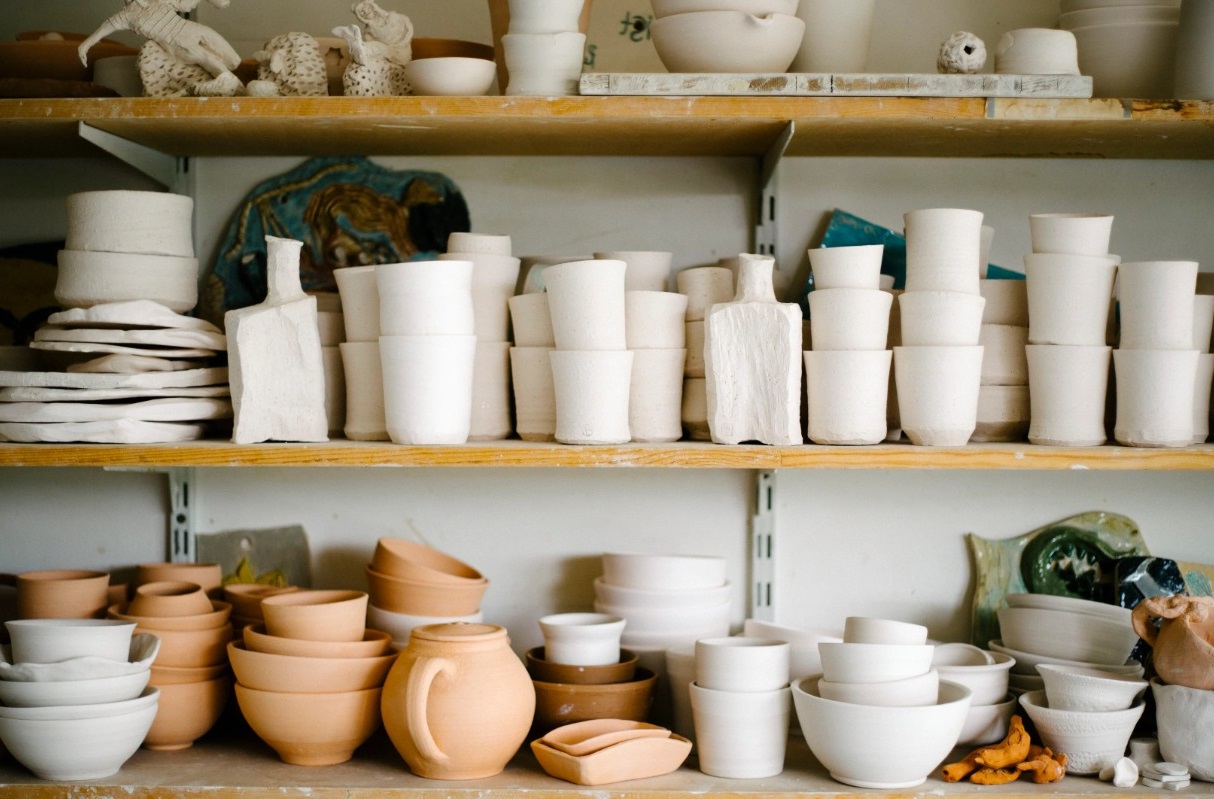
Ceramics Varieties Today.
Unique, bespoke, and handcrafted ceramics are available today. The process of creating handcrafted ceramics begins with the selection of clay type and modeling technique, followed by decoration. These ceramics are typically one-of-a-kind, challenging to replicate, and exclusive in nature.
Silica, also known as SiO2, is well-known for its exceptional resistance to thermal shock and leachability. It is widely used in aerospace and energy industries for manufacturing investment casting shells and cores.
Tungsten Carbide is recognized for retaining its properties at high temperatures. It is often combined with a metal binder such as cobalt or nickel to produce materials known as “cermets.” pure tungsten carbide can also be produced through a high-temperature hot isostatic pressing process. Its hardness and wear resistance make it suitable for manufacturing robust products like cutting tools and abrasive water jet nozzles, but its weight can limit its applications.
Fire bricks, classified as “refractory materials,” are resistant to extremely high temperatures and chemical attacks. They are energy-efficient due to low thermal conductivity, making them the preferred choice for lining furnaces, fireboxes, fireplaces, and kilns among other applications in industries like steelmaking, glassmaking, and ceramics.
Silicon Carbide (SiC), made from silicon and carbon atoms, is an advanced ceramic material known for its high chemical and wear resistance, as well as excellent thermal conductivity. Its properties make it suitable for thermal processing applications, cutting tools, abrasives, and semiconductor devices. The process of making silicon carbide involves heating a mixture of sand (silicon dioxide) and petroleum coke (carbon) at very high temperatures.
Titanium Carbide, composed of titanium and carbon atoms, is used for cutting tools, wear-resistant coatings, and applications requiring extreme strength and hardness. It is typically manufactured by heating a mixture of titanium dioxide and carbon at high temperatures. Titanium carbide is known for its stable properties even at high temperatures and in harsh environments.
Glass ceramics are composite materials created by incorporating tiny crystals into glass. They are distinguished by their high strength, toughness, and resistance to thermal shock. Originally developed for astronomical telescopes, they are now commonly used in everyday products like cooktops, cookware, bakeware, and high-performance reflectors for digital projectors.
Traditional ceramics, known as pottery ceramics, can be categorized into three types – porcelain, stoneware, and earthenware.
Porcelain, made from fine white clay called kaolin, is praised for its fine particle size and high plasticity. Usually white or translucent, porcelain is strong, durable, and non-porous due to firing at high temperatures. It is frequently employed for both ornamental and functional objects like tableware, electrical insulators, and dental implants.
Industrial ceramics are recognized as “serial ceramics” and are produced through automated manufacturing processes, unlike artisanal ceramics.
History demonstrates that from 1700 onwards, production began to have a “dual nature,” combining artisanal and industrial aspects. Small producers or shops create hand-made artisanal ceramics, while large companies focus on large-scale industrial productions.
Even with the standardization of manufacturing, ceramic companies maintain the distinctiveness of their products with the help of suppliers of raw materials. These suppliers conduct research and develop materials that enhance and differentiate the final surfaces to ensure unique and exclusive coverings and floors. They are now considered partners, bringing continuous innovation and technological expertise to support the production of flawless and distinctive products.
LATEST TECHNOLOGICAL ADVANCES IN INDUSTRIAL CERAMICS
While artisanal ceramics boast unique characteristics that are hard to replicate, industrial ceramics possess advantageous technological properties, such as anti-pollution and antibacterial features. In the ceramic industry, human health and environmental concerns are currently of utmost importance.
Ceramic companies are now able to produce finished products with minimal environmental impact, thanks to the solutions offered by their partners to combat harmful emissions into the environment.
For over 25 years, Sicer has been involved in both industrial and artistic ceramic coatings. The patented .LE eco-solvent-based series has been instrumental in the fight against environmental pollution.
The .LE series includes digital inks and adhesive products. These environmentally friendly and lubricated products offer reduced odor and harmful emissions compared to other eco-inks on the market, while maintaining excellent performance.
With recent focus on new antibacterial and antiviral products for final surfaces, particularly due to the 2020 Covid19 pandemic, Sicer is in the process of developing a new antibacterial and antiviral product aimed at promoting health.
This has led to the emergence of “antibacterial ceramics.”
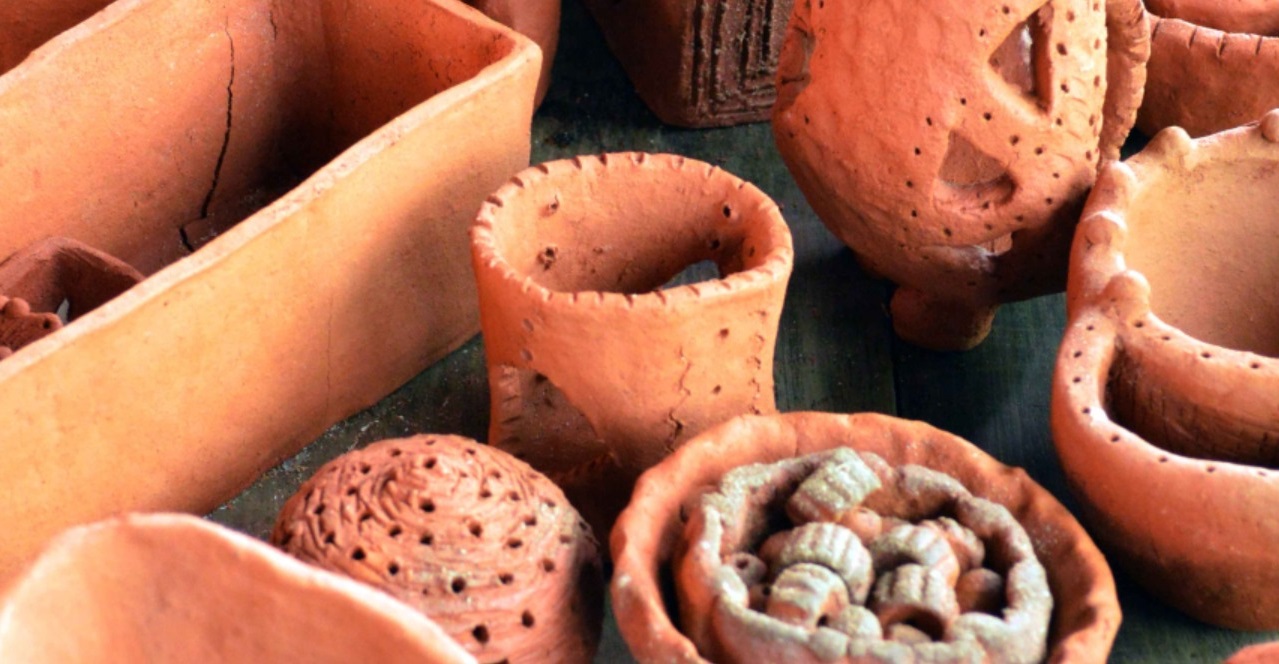
The Evolution of Industrial Ceramics: Returning to the Roots
The term “industrial ceramics” originated from the shift towards automated, mass-produced, and standardized production processes.
However, since the second half of the 20th century, ceramic companies have increasingly prioritized the personalization and differentiation of their products, with support from various industry partners including raw material suppliers and manufacturers.
This shift represents an endeavor by ceramic companies to maintain industrial production while simultaneously aiming to capture the unique and hard-to-replicate attributes of artisan ceramics.
In reality, ceramic producers have accomplished even more by harmonizing craftsmanship and technology to create a perfect blend.
Today, thanks to chemical and scientific research, a ceramic coating or floor can be both unique and exclusive with distinct technological characteristics that were previously unattainable in handcrafted ceramic products. The evolution of ceramics can be perceived as a return to the future.
Why is Ceramic Referred to as “China”?
Porcelain is created from meticulously chosen porcelain clay or pottery stone, utilizing techniques like proportioning, shaping, drying, and firing. Although porcelain shares origins with pottery, the two differ in terms of raw materials, glaze, and firing temperature. Porcelain possesses a tougher texture, transparent body, and finer luster, excelling in both practical and artistic aspects. These attributes led to its gradual superiority over pottery in the history of ceramics. The English term “china” reflects its origins in China, thereby representing the country.
The earliest form of porcelain, often known as “primitive porcelain,” dates back to the Shang Dynasty. However, true porcelain production began in the Eastern Han Dynasty, with techniques maturing during the Tang Dynasty. The Song Dynasty saw the rise of renowned kilns such as the Jun Kiln, Ge Kiln, Guan Kiln, Ru Kiln, and Ding Kiln, collectively known as the “Five Great Kilns.” The Yuan Dynasty witnessed the production of blue and white porcelain by Jingdezhen, acclaimed as the “Capital of Porcelain.” Porcelain during the Ming Dynasty both inherited and advanced the traditions of the Song Dynasty. Noteworthy treasures from this period include Doucai porcelain from the Chenghua period and full-color porcelain from the Jiajing and Wanli periods. Porcelain from the Qing Dynasty is esteemed for its classic, elegant, delicate, and magnificent qualities. The Kangxi period is recognized for its plain tricolor and five-color porcelain, while the Qianlong period became renowned for powder doped color decorated porcelain and enamel porcelain, earning global acclaim.
The Significance of Ceramics
Before the rise of Islam, valuable vessels were primarily crafted from precious metals like gold and silver, while ceramic goods were mainly used for practical purposes like storing water and food, transporting items, and cooking. In the Islamic world, however, luxury ceramics gained popularity and were admired for their beauty and affordability. This shift could be attributed partly to Muslim restrictions on men using gold vessels, as well as the demand from new buyers for reasonably priced luxury items. While Chinese imitations made up only a portion of the luxury ceramics produced in the Near East, many techniques and styles, such as mina’i and lusterware, were developed independently to cater to local tastes and influences.
Local potters in the Near East were inspired by the elegance and durability of Chinese stoneware and porcelain ceramics and attempted to replicate their prized characteristics. Porcelain, which required white kaolin clay fired at extremely high temperatures, was not feasible to produce in the Near East due to the unavailability of the required clay material and the amount of wood needed for sustained firing at high temperatures. Iraqi potters innovated ways to imitate the smooth white surface of Chinese ceramics by applying an opaque white coating called slip to the earthenware body of vessels and adorning it with designs in cobalt blue and other colors to emulate Chinese porcelain.
Chinese ceramics had a lasting impact on Islamic world pottery, a trend that continued in Iran during the twelfth and thirteenth centuries and peaked during the Safavid period (1501–1722), when ceramics became increasingly sought after as desirable luxury items for gifting. For example, in 1609, the Safavid ruler Shah Abbas presented a gift of 835 Chinese porcelain vessels to the shrine of his dynasty’s spiritual founder, Shaikh Safi, in Ardabil, Iran. This act exemplifies the esteemed status of Chinese porcelain as prized luxury objects in the Safavid court and underscores its role in official gift-giving.
In the early seventeenth century, Chinese potters imitated Ottoman and Safavid ceramic designs. The likely patrons of these works were Muslims in influential positions in the Ming court and Muslim merchants in other parts of China. Islamic designs and Arabic inscriptions were the preferred choices for luxury ceramic wares among these customers.
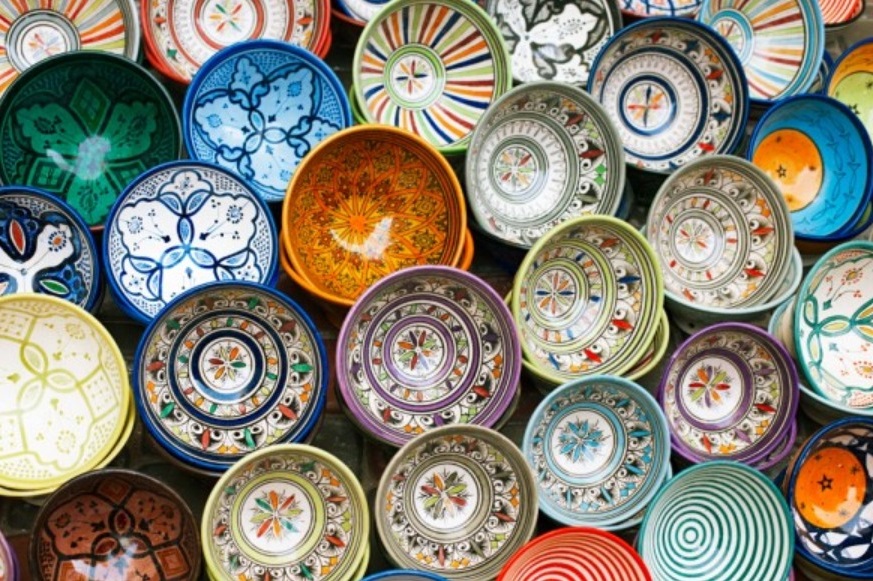
Cutting-Edge Applications of Ceramics
Advanced ceramics find use in diverse industries for a myriad of applications. Some examples include:
Glassware: Glass products represent a significant application of ceramic materials in our everyday lives. From windows, glass containers, mirrors, and lenses to glass mugs and decorative items, glassware falls under the category of ceramics and provides various well-known advantages. Typically composed of non-crystalline silicates with other oxides like calcium oxide, sodium oxide, potassium oxide, and aluminum oxide influencing their properties and color.
Refractories: Another common application for ceramics is in refractories. These are ceramic materials engineered to endure extreme temperatures, typically above 1,000°F, found in modern manufacturing. Refractories serve as heat-resistant insulators lining the hot surfaces in numerous industrial processes and can withstand these high temperatures without melting or decomposing. Additionally, they are inert in such environments, meaning they do not interact with the reacting components. Refractories are fabricated from both natural and synthetic materials, including alumina, bauxite, dolomite, magnesite, silicon carbide, zirconia, and more, and are generally divided into two categories: preformed shapes and refractory ceramic fibers.
Aerospace: Many high-temperature aerospace components, such as turbine blades, heat shields, and nose cones, are produced using advanced ceramics. Although traditional manufacturing has been employed to shape these parts, 3D printing is becoming increasingly popular for this purpose.
Biomedical: In the field of biomedical applications, ceramics are utilized in medical implants because of their biocompatibility, strength, and ability to resist wear.
Electronics: Ceramic components are integrated into electronic devices for their electrical insulation properties and heat dissipation capabilities.
Energy: Owing to their thermal stability and heat resistance, ceramic materials are utilized in various energy applications, including fuel cells, solar panels, and thermal insulation.
Which Country Leads in Producing Excellent Ceramics?
Advancements across various industries have elevated ceramic tiles as the top choice for surface coverings in both residential and public spaces. This surge in popularity has attracted several companies to enter the production sector.
Our upcoming article will explore the nations competing for dominance in this decorative and practical industry. If you are deeply involved in this field and are curious about the origins of the best tiles, read on to the end of the article.
Spain: Long-Standing Traditions as the Foundation of Superior Quality
One common question that arises regarding surface coverings is: Which country creates the best ceramic tiles? Spain holds a strong position in the global market for decorative ceramics.
The Spanish ceramic industry has much to be proud of. Its production capabilities have reached new heights, with well-known manufacturers offering a wide range of tile designs that can cater to even the most discerning preferences. The captivating aesthetics and unmatched quality of Spanish tiles are undeniable advantages for consumers considering this option.
Enhancing their appeal and durability, these tiles are made using red and white clay in the production process.
Germany: A Blend of Unique Heritage and Unrivaled Craftsmanship
Germany holds the second position globally in terms of tile quality, a well-deserved position given the exceptional quality of materials used. This country rightfully holds its place among the top countries for producing tiles.
The structural strength and durability of German tiles often surpass even the highest expectations. German companies prioritize delivering a dependable product to their customers. This focus on quality keeps the demand for German tiles high in markets like Russia, despite various other options available.
For enthusiasts of traditional aesthetics, German tiles offer luxurious finishes that imitate wood or stone textures. Some manufacturers’ portfolios also include surprisingly innovative designs, solidifying Germany’s position as a dynamic player in the ceramic industry.
The selection of German ceramics signals a sophisticated taste and keen judgment. These tiles are typically made using white clay, valued for its resilience, wear resistance, and versatility.
China: A Diverse Product Range Where Versatility Meets Affordability
China holds the third position in the world’s top ceramic tile producers list. By incorporating European technological advancements, the Chinese ceramic industry effectively combines cutting-edge design, superior quality, and cost-effectiveness, making their tiles an attractive option on multiple fronts.
Noteworthy for their economic accessibility, these tiles do not compromise on quality, thereby appealing to a wide range of consumers. Chinese manufacturers are extremely diligent in their pursuit of perfection, continually refining their manufacturing techniques and machinery.
Continuous investment in technology enables the production of tiles that are not only functional but also works of art in their own right. Chinese tiles offer diverse styles, including granite, mosaic, and marble, presenting an embellished and sophisticated touch to various spaces.
The expanding market presence of China indicates its proactive approach in reaching new consumer categories annually. The commitment to sustainability, through the use of eco-friendly materials and advanced manufacturing processes, is a source of pride for them.
The distinctive blend of affordability and design innovation sets Chinese ceramic tiles apart, making them a formidable force in the global ceramic tile market.
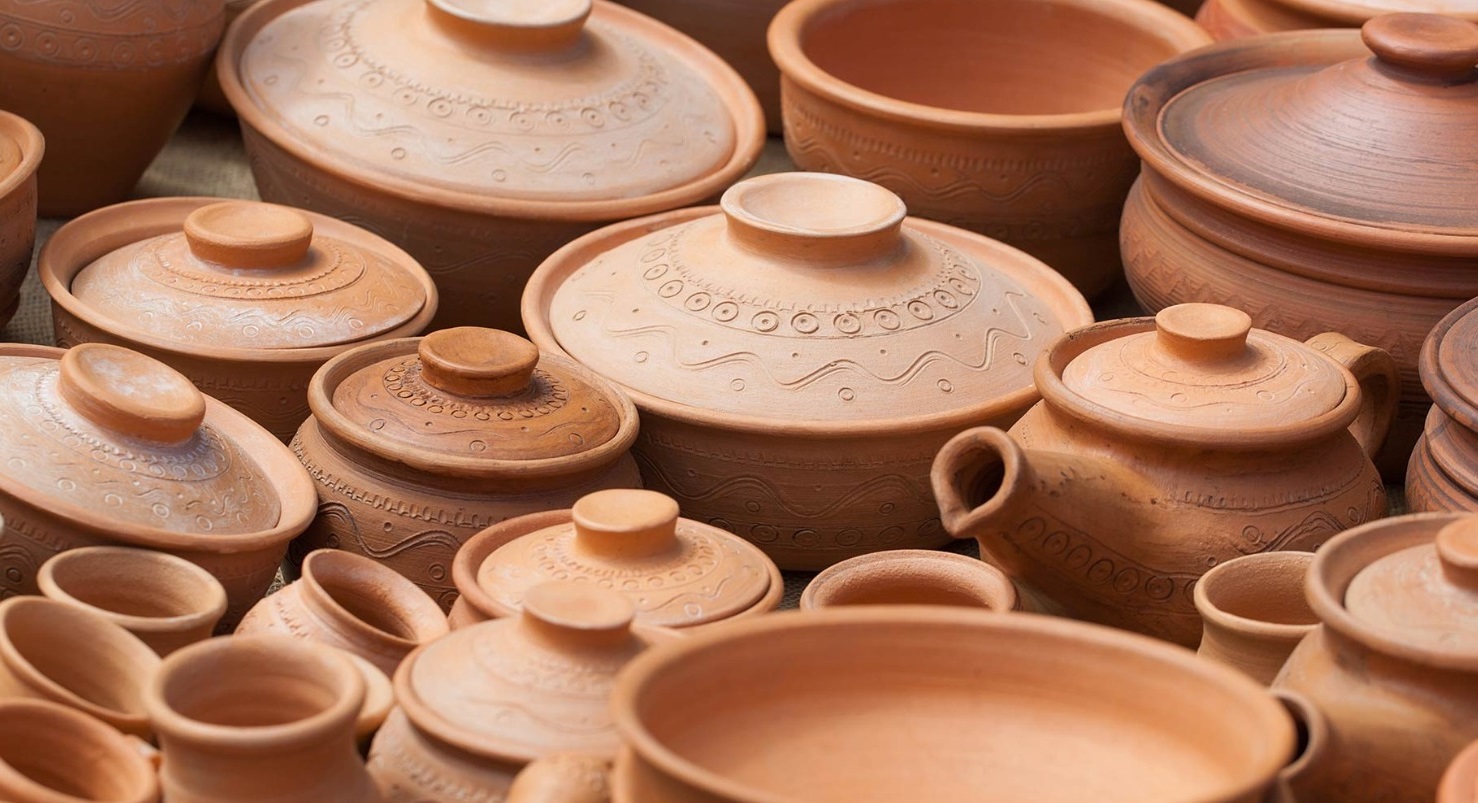
Italy: Exemplifying Quality, Versatility, and Sustainable Elegance in Tile Design
Italian ceramic tiles are globally celebrated for their exceptional quality and unmatched design. Manufactured to strict standards using premium raw materials, these tiles offer a unique combination of durability and aesthetic appeal. Their wide range of styles, shapes, and patterns provides unparalleled versatility, allowing their use in various settings such as kitchens, bathrooms, living rooms, and outdoors.
Italy has been a front-runner in the tile industry, offering artistic flair and customization options that are difficult to find elsewhere regarding design innovation. These tiles have artistic designs and high color consistency, providing a uniform and harmonious look to any space they are used in.
In addition to their physical attributes, Italian ceramic tiles are environmentally friendly, adhering to stringent ecological standards during production. Furthermore, their long-lasting nature and potential to enhance property value make them a sound investment in the long term.
In summary, Italian ceramic tiles offer a blend of quality, design versatility, and durability that is hard to match. Whether you’re looking to invest in a long-lasting, beautiful surface or to add a touch of luxury and artistic expression to your living space, Italian ceramic tiles are an excellent choice.
Iran: The Sturdy Elegance of Ceramic and Tile Artistry
In the last two decades, Iran has seen significant growth in the production of ceramic tiles, highlighting the strength and resilience of this important industry within the nation. Additionally, the affordability of these tiles makes them an even more appealing option.
When evaluating Iran’s tile and ceramic sector compared to global standards, a multi-faceted picture emerges. Some qualities align with industry trends worldwide, while other characteristics are distinctively Iranian, giving them a unique advantage in the marketplace.
